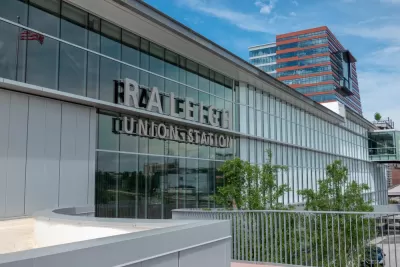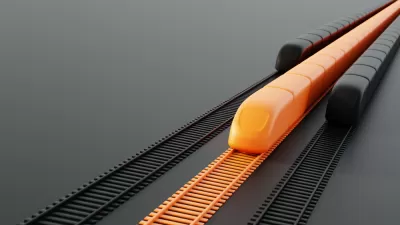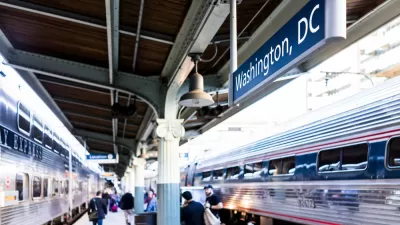Federal grant funding awarded recently takes a critical step toward making high-speed intercity rail service a reality between North Carolina and Virginia.

"The effort to establish high-speed passenger rail service between Raleigh and Richmond, Virginia, got a boost Friday with a $47.5 million federal grant to the N.C. Department of Transportation," reports Richard Stradling.
"The money will allow the state to buy a rail line between Raleigh and Ridgeway, near the Virginia state line, from freight railroad CSX," adds Stradling. The Federal Railroad Adminsitration refers to the planned intercity rail line as the Southeast High-Speed Rail Corridor.
(Astute observers will recall a CSX sale playing a central role to rail transit plans that will connect the state of Virginia to Washington, D.C.)
As for how the new stretch of rail line will play into the ambitions for intercity rail between North Carolina and Virginia, Stradling explains that the "state’s long-term plans for rail service include passenger trains capable of going 110 mph between Raleigh and Richmond on the [CSX] S-line."
"Actual construction of the project is still years away, but NCDOT is working to eliminate railroad crossings on the CSX line in Wake County by building bridges, starting with Durant and New Hope Church roads in Raleigh," according to Stradling.
The grant was announced earlier this month by a bipartisan coalition of Congressional representatives of the state of North Carolina. The news about the state of North Carolina's high-speed, intercity rail ambitions synchronized with news about high-speed rail plans in Texas gaining key approval from federal regulators.
FULL STORY: NC gets federal grant to buy corridor for Raleigh-Richmond high-speed rail

Alabama: Trump Terminates Settlements for Black Communities Harmed By Raw Sewage
Trump deemed the landmark civil rights agreement “illegal DEI and environmental justice policy.”

Planetizen Federal Action Tracker
A weekly monitor of how Trump’s orders and actions are impacting planners and planning in America.

Why Should We Subsidize Public Transportation?
Many public transit agencies face financial stress due to rising costs, declining fare revenue, and declining subsidies. Transit advocates must provide a strong business case for increasing public transit funding.

Understanding Road Diets
An explainer from Momentum highlights the advantages of reducing vehicle lanes in favor of more bike, transit, and pedestrian infrastructure.

New California Law Regulates Warehouse Pollution
A new law tightens building and emissions regulations for large distribution warehouses to mitigate air pollution and traffic in surrounding communities.

Phoenix Announces Opening Date for Light Rail Extension
The South Central extension will connect South Phoenix to downtown and other major hubs starting on June 7.
Urban Design for Planners 1: Software Tools
This six-course series explores essential urban design concepts using open source software and equips planners with the tools they need to participate fully in the urban design process.
Planning for Universal Design
Learn the tools for implementing Universal Design in planning regulations.
Caltrans
Smith Gee Studio
Institute for Housing and Urban Development Studies (IHS)
City of Grandview
Harvard GSD Executive Education
Toledo-Lucas County Plan Commissions
Salt Lake City
NYU Wagner Graduate School of Public Service





























